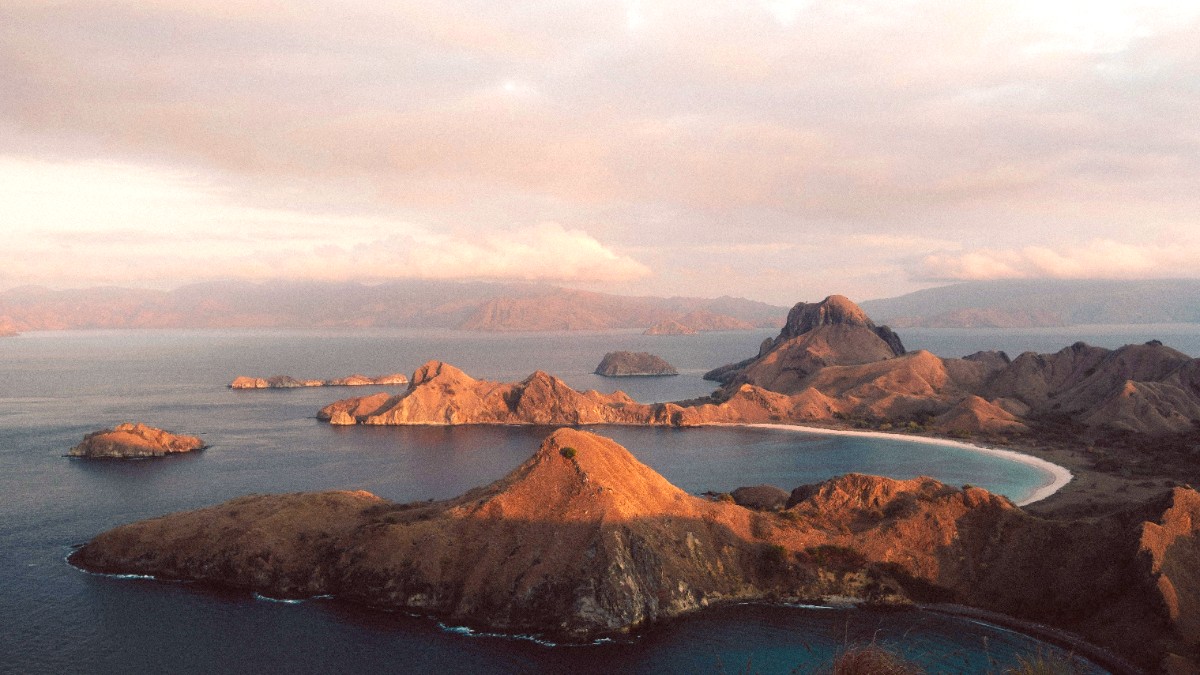
Indonesia
Whether you dream of gliding over coral reefs alongside sea turtles, practicing yoga as the sun sets, or simply relaxing on a pristine white beach with a fresh coconut in hand, Gili Air delivers a refreshing escape. This guide aids your journey to this special place, making your visit filled with ease and unforgettable moments. Get ready for an island adventure where peace and natural beauty meet.
Gili Air sits as one of three renowned islets positioned off the northwest coast of Lombok, Indonesia. It forms a trio with its sisters, Gili Trawangan and Gili Meno, each with distinct charm. Gili Air holds the distinction of being the closest island to Lombok's mainland, making it an arrival point for many travelers. This proximity also offers clear views of Lombok's majestic Mount Rinjani, especially striking during sunrise.
The island measures approximately 1.5 square kilometers. This small size makes it easily traversable on foot or by bicycle. A leisurely stroll around its entire perimeter takes about 1.5 to 2 hours, allowing you to discover its varied coastlines. From the lively harbor area on the east to the tranquil sunset beaches on the west, every turn presents a different aspect of its charm. The island's geography includes a flat terrain, characterized by soft sandy paths, lush coconut groves, and scattered local homes or guesthouses.
The Gili Islands, including Gili Air, were once uninhabited, untouched by permanent human settlement for centuries. Their history as a tourist destination began relatively recently, starting in the late 20th century. Before tourism, the islands served mainly as transient fishing grounds for local communities from Lombok and Sulawesi. Bugis fishermen, known for their seafaring traditions and extensive trading networks across the Indonesian archipelago, were among the first to establish temporary settlements here. These initial interactions formed the basis for future habitation.
The unique name "Air" is a special meaning in Indonesian, translating to "water." This name indicates the island's most valuable historical resource: natural freshwater springs. Compared to its neighboring Gilis, Gili Trawangan and Gili Meno, Gili Air had a distinct advantage with its freshwater supply. This served as a more attractive location for early settlers and, later, for the establishment of guesthouses and businesses catering to visitors. The presence of freshwater eased the logistical challenge of transporting water from the mainland, supporting more sustained development.
Gili Air became a favored choice, between quieter Gili Meno and lively Gili Trawangan.
In the 1980s, adventurers discovered pristine waters and relaxed atmosphere.
From fishing outposts to popular tourist spots, retaining local charm.
Its past as a water source informs its present character, bringing authenticity.
Efforts to balance tourism growth with environmental preservation.
Gili Air presents an unique island experience, a perfect balance between its two sister islands. This positions Gili Air as a popular choice for travelers seeking both relaxation and activity without overwhelming crowds. The island is known for several defining characteristics that shape the visitor experience.
First, its relaxed pace sets the tone for every day. Life here unfolds slowly, inviting you to shed stress and simply enjoy the moment. Mornings begin with sunrises over Mount Rinjani, and evenings end with spectacular sunsets over the ocean. There is no rush; activities flow naturally from one to the next, guided by the sun and tides. This calm atmosphere makes it an ideal destination for unwinding and escaping the pressures of modern life.
Second, Gili Air boasts stunning natural features. Its white-sand beaches encircle the entire island, providing endless opportunities for sunbathing, swimming, and beach walks. The sand feels soft underfoot, and the clear, warm turquoise waters invite you for a dip. These underwater ecosystems serve as a major draw for snorkelers and divers alike. You can easily spot colorful fish, sea turtles, and even small reef sharks in their natural habitat. The health of these reefs remains a priority, with many local businesses participating in conservation efforts.
Gili Air presents a compelling destination where the simple pleasures of island life take precedence, inviting visitors to unwind and explore at their own pace.
Beyond its physical attributes, Gili Air has a range of activities. Snorkeling and diving lead the list, with numerous dive centers giving courses and excursions for all skill levels. The island's calm waters and rich marine biodiversity establish ideal conditions for underwater exploration. Yoga and wellness activities also thrive here, with several studios presenting daily classes and retreats, fostering inner peace and physical well-being.
Additionally, the island has a thriving food scene. Beachfront cafes and restaurants serve fresh seafood, local Indonesian dishes, and international cuisine, often with tables directly on the sand. These dining spots serve as settings for meals while watching the sunset or stars. Gili Air truly delivers an escape, blending tranquility, natural beauty, and engaging activities into a memorable travel experience.
Life unfolds slowly, stress-free. Mornings begin with sunrises, evenings end with sunsets, all without rush.
White-sand beaches, clear turquoise waters, and thriving underwater ecosystems define the island's charm.
Sandy paths for bicycles and cidomos mean cleaner air and a quiet, mindful way of moving.
Gili Air belongs to the West Nusa Tenggara province of Indonesia, a region celebrated for its natural beauty and rich cultural heritage. Its location in the Lombok Strait gives it clear, warm waters, making it an excellent spot for marine activities.